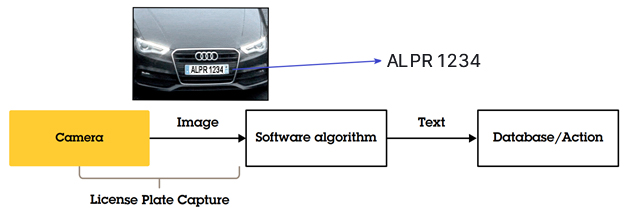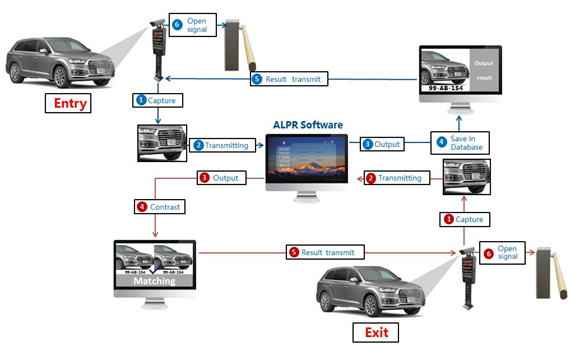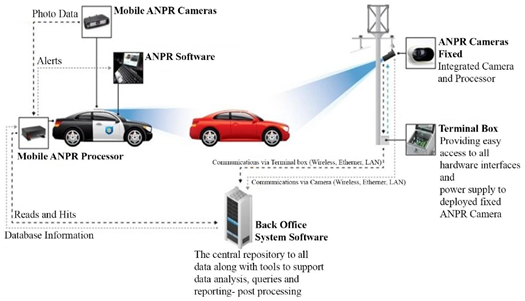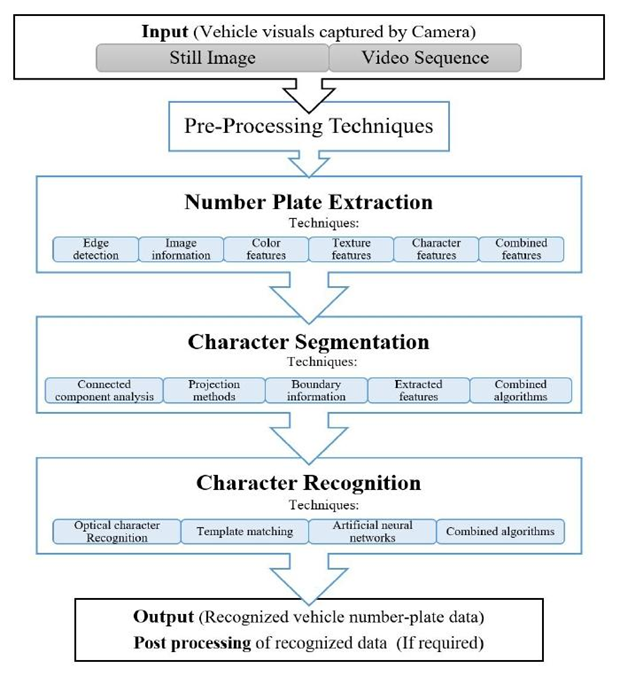Main Definitions and Objectives
Introduction
License Plate Recognition (LPR) is a versatile technology that plays a vital role in various applications within the road transport sector. These include access control, toll collection, law enforcement, and license plate tracking. Typically, industrial cameras with real-time shooting capabilities are employed for this purpose. When equipped with a suitable sensor (image sensor), these cameras offer the necessary sensitivity to capture high-quality images even at fast shutter speeds.
The primary objective of LPR is to automatically extract license plate characters from the images captured by CCTV cameras. The security system then processes these extracted characters for further analysis and actions.
The LPR system effectively handles a range of tasks, including:
- Recognizing and capturing state registration plates.
- Detecting vehicles within the monitored area, determining their movement directions, and tracking entry/exit events.
- Archiving information about passing vehicles and providing real-time data output.
- Searching the archive for recognized license plates based on specific criteria and exporting recognition history.
- Maintaining a database of license plate numbers and linking additional information about the vehicle owners.
- Grouping license plate records to create interception lists, trigger automatic reactions (such as opening barriers), and follow predefined scenarios.
- Retrieving data from truck scales for further processing.
License Plate Recognition finds practical applications in various areas, including access control systems, parking management, and high-speed highway toll collection.
Composition and Principle of Operation
The LPR system consists of software that captures an image, locates the location of the number on the image, and then extracts letters and numbers using character recognition algorithms that digitize pixels that standard computer file systems can understand. The input data for LPR are signals from video cameras that capture images of license plates.
The license plate analysis software is responsible for processing the images, which can run directly on the camera or a remote server. This software automatically detects and reads license plates in real-time. The recognized license plates can be stored in a database for future reference or used to trigger specific actions, such as opening a gate.
In the LPR process, a typical working diagram is shown in the image below:
- For zone entry, a video camera captures the front image of the vehicle, which is then transferred to the program module. The software algorithm analyzes the image, performs license plate recognition, saves the result in the database, and sends it back to the camera. The camera, upon receiving the result, sends a switching signal to the barrier switch.
- For zone exit, a similar process takes place. The video camera captures the front image of the vehicle, which is then transferred to the program module. The software algorithm recognizes the image, outputs the recognition result, and compares it with the recognition result obtained during zone entry. If the comparison is successful, the result is transmitted to the camera, which in turn sends a switching signal to the barrier switch.
This technology can be incorporated into various box solutions, all of which serve the same fundamental purpose: to offer a high-precision system for automated vehicle information retrieval. It finds applications in a wide range of areas, including access control, parking management, toll collection, user billing, delivery tracking, traffic management, police and security services, customer service and directions, red light and lane compliance, assessment of queue lengths, and numerous other services. A basic system diagram of fixed and mobile LPR technology is presented in the image below:
LPR technology tackles several challenges to ensure accurate license plate recognition. These challenges include blurred character boundaries caused by poor focus or vehicle movement, distorted images resulting from a wide camera angle, and low contrast. Glare from car headlights or sunlight reflections can wash out the numbers, and various other factors can impact image clarity.
The speed and accuracy of vehicle license plate detection through the LPR system heavily rely on the quality of the images captured by the camera. The global market offers a range of cameras from various manufacturers, each with different technical specifications. Choosing the right camera is crucial for the optimal performance and functionality of the LPR system.
License plate recognition encompasses the capture of license plate images within a designated area using a video camera. The captured images, whether static or dynamic, undergo a series of image-based recognition algorithms to convert the alphanumeric characters into text. The effectiveness of an LPR system heavily relies on the quality of the initial image, while the algorithms themselves play a vital role in achieving accurate results. Developing reliable algorithms requires meticulous consideration and extensive coding to address the intricacies inherent in the system. The general processes involved in LPR systems are depicted in the image below:



